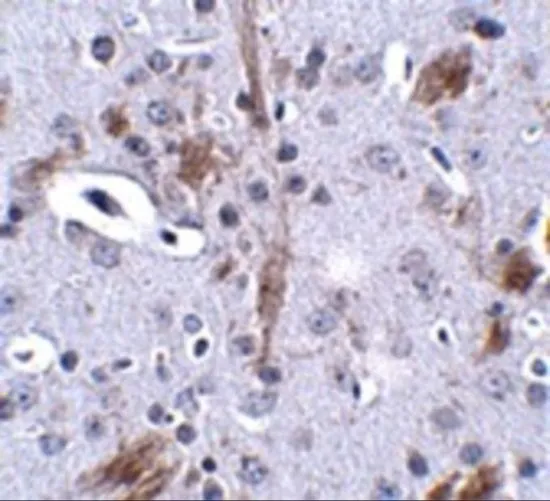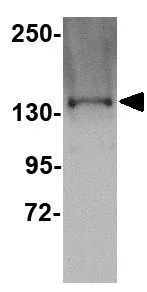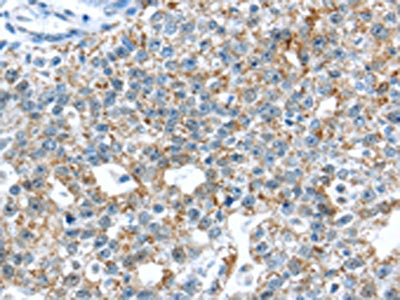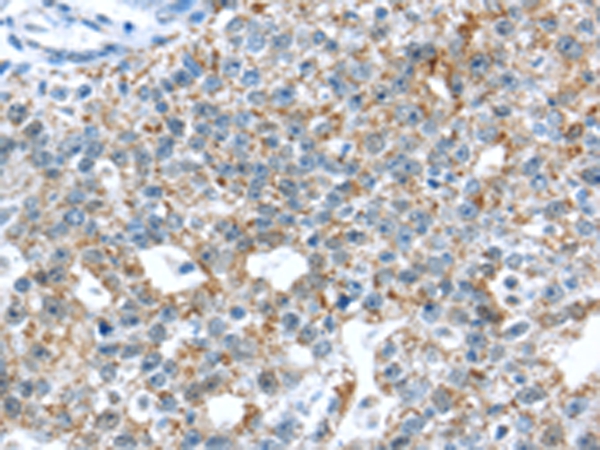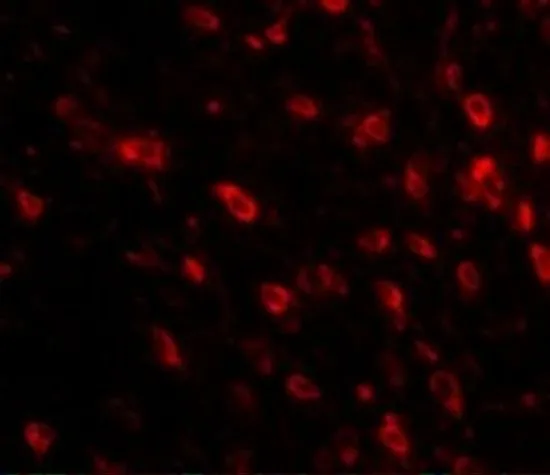
IHC-P analysis of human brain tissue using GTX85349 TTBK1 antibody. Working concentration : 20 microg/ml
TTBK1 antibody
GTX85349
ApplicationsWestern Blot, ELISA, ImmunoHistoChemistry, ImmunoHistoChemistry Paraffin
Product group Antibodies
TargetTTBK1
Overview
- SupplierGeneTex
- Product NameTTBK1 antibody
- Delivery Days Customer9
- Application Supplier NoteWB: 1 microg/mL. IHC-P: 2.5 microg/mL. *Optimal dilutions/concentrations should be determined by the researcher.Not tested in other applications.
- ApplicationsWestern Blot, ELISA, ImmunoHistoChemistry, ImmunoHistoChemistry Paraffin
- CertificationResearch Use Only
- ClonalityPolyclonal
- Concentration1 mg/ml
- ConjugateUnconjugated
- Gene ID84630
- Target nameTTBK1
- Target descriptiontau tubulin kinase 1
- Target synonymsBDTK, tau-tubulin kinase 1, brain-derived tau kinase
- HostRabbit
- IsotypeIgG
- Protein IDQ5TCY1
- Protein NameTau-tubulin kinase 1
- Scientific DescriptionTau tubulin kinase (TTBK1) belongs to the casein kinase 1 superfamily and is involved in the phosphorylation of specific serine/threonine residues in paired helical filaments of the tau protein. It is specifically expressed in the brain and induces tau aggregation in human neuronal cells in a dose-dependent manner. TTBK1 levels have been found to be upregulated in the brains of Alzheimers disease (AD) patients, and mice expressing human TTBK1 protein showed significant age-dependent memory impairment. These mice displayed increased levels of the CDK5 activators p25 and p35, and reduced levels of the NMDA receptor types 2B and 2D, suggesting that TTBK1 may play a role in memory dysfunction in AD patients. Multiple isoforms of TTBK1 are known to exist. This antibody is predicted to not cross-react with TTBK2.
- Storage Instruction2°C to 8°C
- UNSPSC12352203

